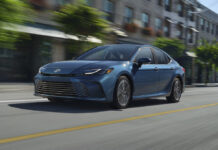Every manufacturer puts out horsepower and torque figures at the crank, but how does that translate to real power on the road?
On paper, even family sedans like the 2018 Toyota Camry V6 XSE and the Honda Accord 2.0T Touring put out impressive power. Toyota rates the Camry, for instance, at 301 horsepower and 267 lb-ft of torque. That sort of power through a front-wheel drive platform? Not too shabby. The Accord, on the other hand, makes less power, but more torque. Honda went the turbocharged route, so the new model makes 252 horsepower and 273 lb-ft of torque from its 2.0-liter engine. Whether you go with a 3.5-liter naturally aspirated V6, as in the Camry, or the smaller, turbocharged unit, everything looks great. However, manufacturers rate horsepower numbers at the crank. That way, we see the highest numbers the engine can put out under the best possible conditions. In the real world, however, things look a bit different.
That’s where dynamometer testing comes in. Thanks to our friend Harvey over at The Boost Creep Ltd, we tested the Camry and Accord to see what they’re actually putting out at the wheels. While manufacturer figures list horsepower at the crank, losses mount as the engine’s power makes its way through the drivetrain to the wheels. Since we’re in Colorado, a mile above sea level, atmospheric conditions also eat away at the engine’s output to the tune of about 15%. However, Harvey’s dynamometer can actually compensate for atmospheric conditions, giving a more accurate reading. In the end, the tests provide numbers as if the cars were at sea level.
So how do these two family sedans compare? How much power are they actually putting down on the road? Check out the video above to find out! Subscribe to The Fast Lane Car and TFLnow for more news, views, and real-world tests!
See our ultimate buyer’s guide for the 2018 Toyota Camry V6 XSE and Honda Accord 2.0T Touring below!



























